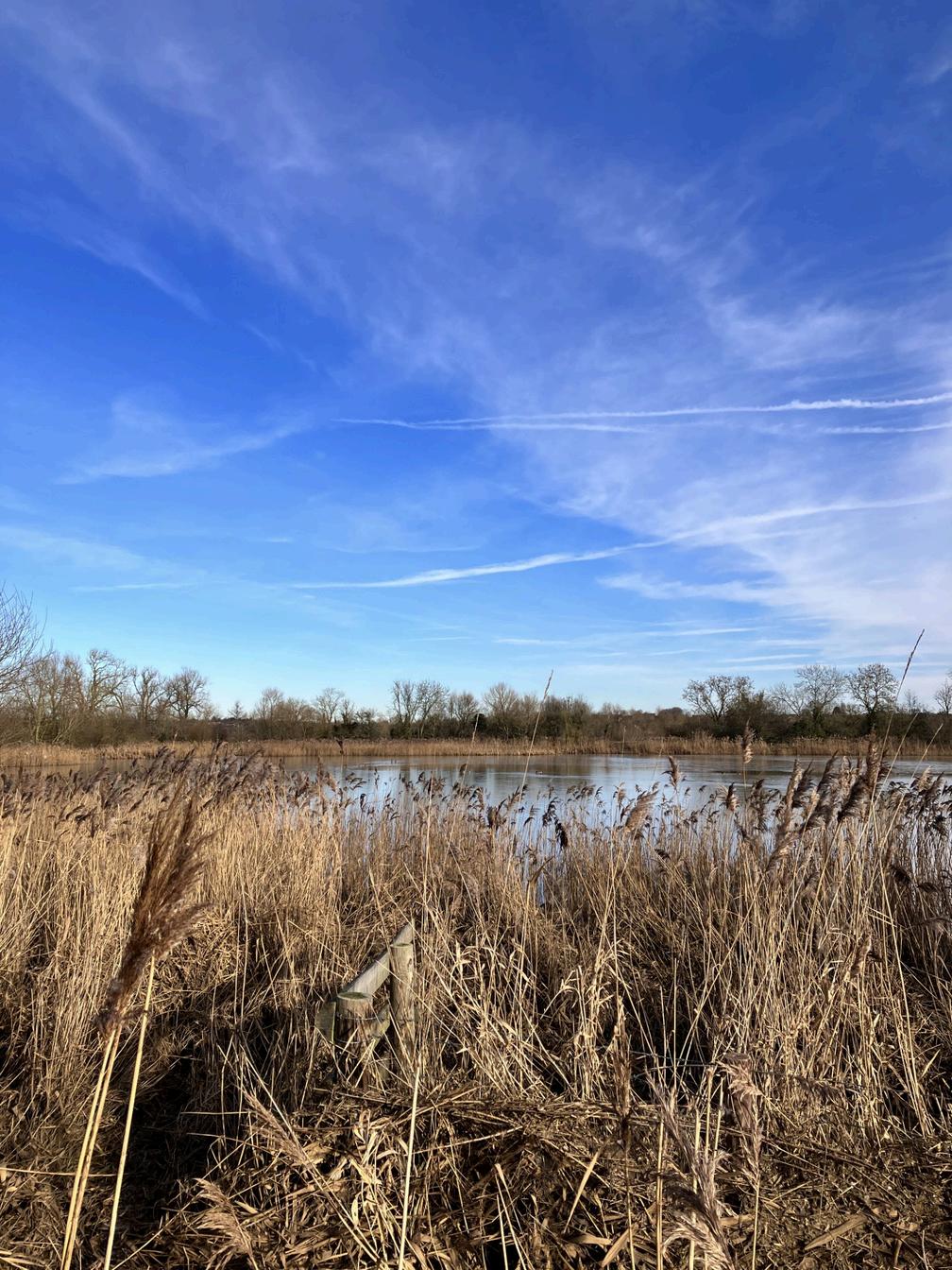






In each issue we will feature a 'Spotlight' on one of our volunteers. In this issue Abi Haidemenos talks about the recent Our Earth Exhibition and the importance of nature in urban areas

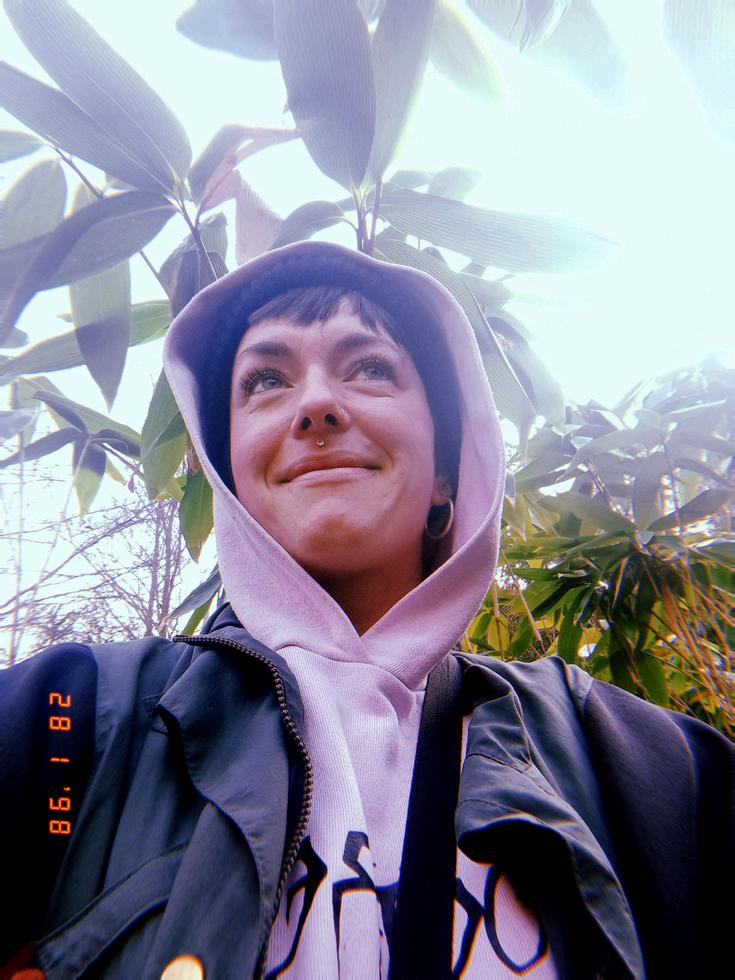

Our Earth Exhibition
Wildlife Trust and Insectacollective ‘Our Earth’ exhibition set out to give the people of Leicester a chance to join an inspiring three days of nature celebration at the Highcross Shopping Centre. Hundreds of families and people from across the city came together to make collaborative artworks, discuss their own experiences of Leicestershire wildlife, vote for their favourite biodiversity/climate themed art from around the world, and even get selfies with a giant badger!
Bringing a taste of Leicestershire’s biodiversity to the Highcross was an absolute privilege, and an opportunity to share knowledge with the wonderfully diverse urban communities who can be unintentionally sidelined from wider discussions of nature renewal and protection. For change to happen we all need to be both invested in protecting our natural world, and more importantly, listened to This event showed that City Centre activities can begin to bridge this gap and ensure all communities are heard and involved in protecting the wildlife of our county. We met community garden starters, young backyard entomologists, urban botanists, and many green fingered friends.
Urban areas can be overlooked in favour of rural flagship reserves but this event showed there is huge value in both. We hunted incredible flora and fauna around St Nicholas’ Circle, we made natural pigments from local soils to paint with, and the brilliant students from Leicester College spoke with people about their inspirations for beautiful artworks and fashion pieces
Nature protection is everyone ’ s business, and the Our Earth event proved that you don’t have to be knee deep in a SSSI bog to make it so! Saturday bargain hunters at the Highcross also have a deep interest in uplifting their local green spaces, to pass on plant care knowledge from their Nanna or Dadi, and to ensure future generations can watch Peregrines nest at the Cathedral
The people of the City of Leicester are full of life and a love of the natural world, lets keep working to bring wildness closer for our urban neighbours and watch the magic they will create!
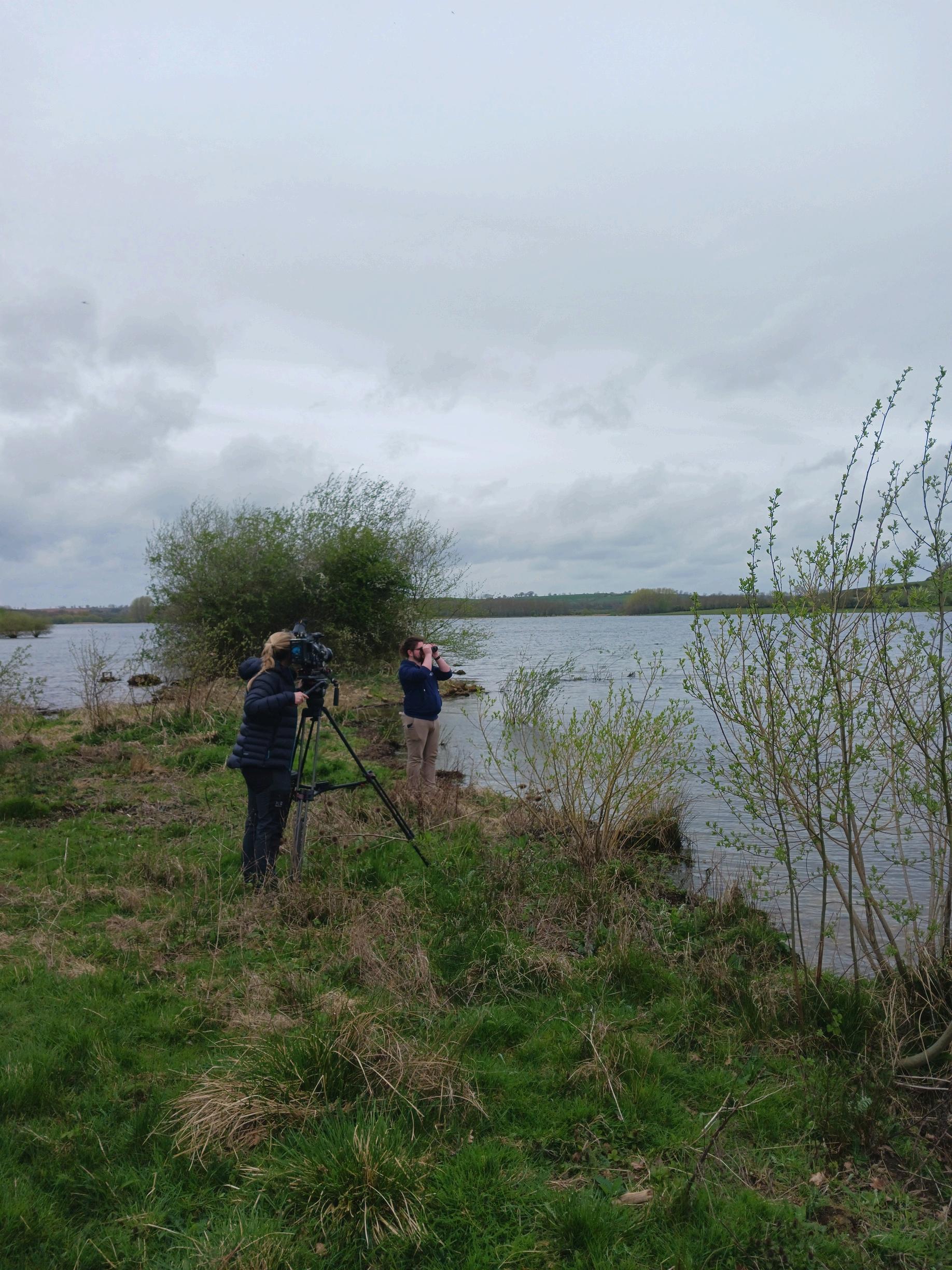

We were thrilled to be asked to feature on BBC Countryfile It is a great programme dedicated to nature and the countryside, and it has given us the opportunity to showcase our Nature Reserve at Rutland Water on a national level.
We had a great time filming with the crew and presenters They showed real enthusiasm for our work and were so inspired by what we have achieved. It was a privilege to work with such a talented group of people.
They were all, especially the presenters, great at explaining the best way to tell our story and all really supportive when we were talking to camera Sean Fletcher was a fantastic person to work with and so engaging, especially when he was talking to Ronny from the Osprey Leadership Foundation.
We would like to extend a huge ‘thank you ’ to BBC Countryfile for featuring us, we had a great time and would be more than happy to welcome the team back again anytime
Special thanks must also go to all our friends, partners and volunteers that have been involved at the reserve and have made this filming possible, including The Leicestershire and Rutland Bat group for their involvement.
"It has been fantastic to be offered the opportunity to showcase Rutland Water, the work of our Reserve teams and the numerous volunteers who have created this wonderful site, on such a high profile show. When you consider that the Reservoir was only built less than 50 years ago, but through dedicated work it is now is an Internationally important site for conservation The Reserve goes from strength to strength with the continued success of breeding Ospreys, and record years for bird counts such as Egrets, Teal, Pintail and Shoveler. We have also seen record numbers of Otter sightings, and recently breeding of Marsh Harriers and Nightingales Behind these successes lie scientific research and recording that support our work – for example last year we counted over 124,000 birds, ringed over 5,500 birds of 51 species and recorded 572 species of beetle on the site. It is great to be able to share this work and successes and to encourage people to come to this amazing place and see our work in restoring Nature "
Mat Carter, CEO Leicestershire and Rutland Wildlife Trust.

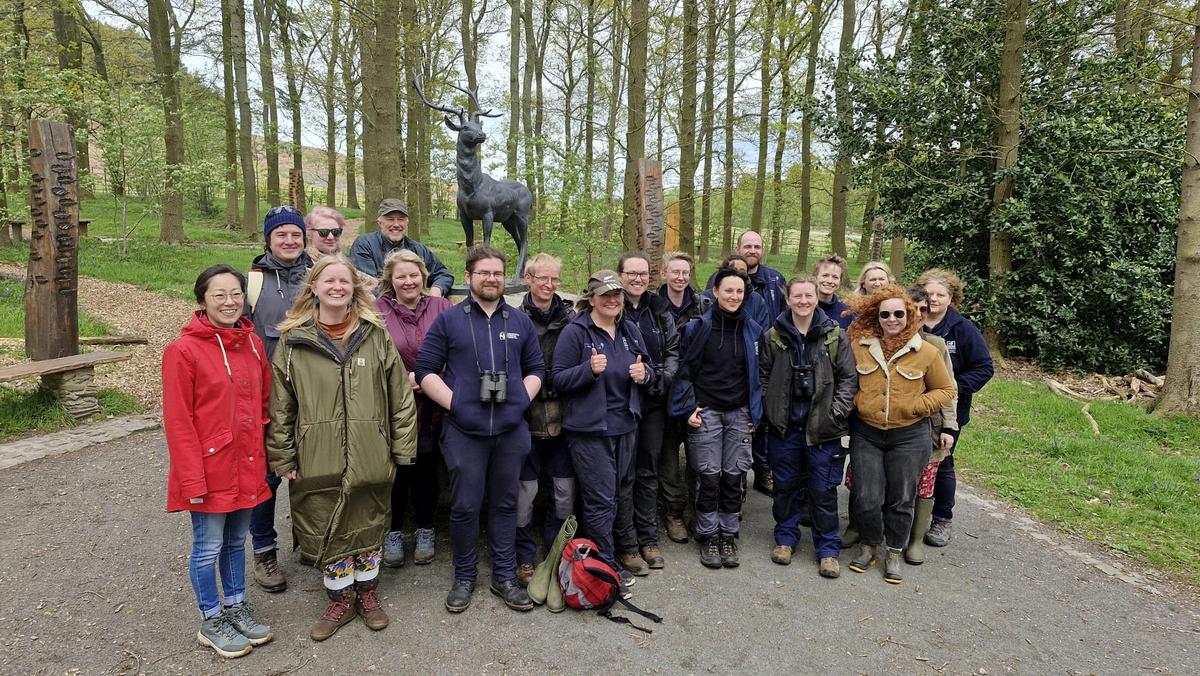


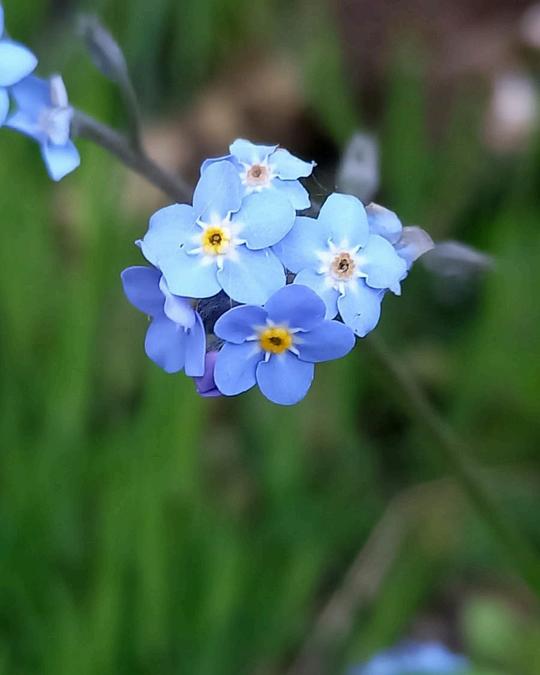

Don’t forget we have our Volunteers’ Hub that is full of important information to help you as you volunteer. Our dedicated volunteer hub has everything you need to make the most of your time with us. On the hub you will find the Volunteer Handbook, key health and safety information, Volunteer Newsletters, and some FAQs.
You can find the Volunteers’ Hub using the following link: https://www.lrwt.org.uk/volunteers-hub
Warmer weather means the start of tick season and an increased threat of Lyme disease If you watched us on Countryfile you would have seen a long section all on ticks
What are ticks?
Ticks are small arachnids which feed off the blood of birds and mammals, including pets and people. Ticks are widespread across the UK and can be found in both urban settings and the countryside where there is long grass, rough vegetation and woodland.
What is Lyme disease?
Lyme disease is an infection caused by bacteria called Borrelia burgdorferi. A tick picks up the bacteria from an animal such as a mouse or bird and then passes it on to the next animal it feeds on, which could be you.
It is important to understand the risks of ticks and Lyme disease, especially if you are working outdoors.
Please find a really useful and simple leaflet about ticks and Lyme disease on the Volunteers’ Hub.
Our wildlife garden at Egleton near the Anglian Water Birdwatching Centre has been looking lovely recently as we have started to see the many flowers come out in bloom. Huge thanks go to our gardening volunteers who do an amazing job keeping this garden looking so beautiful and colourful
In May we took a trip over to Bradgate Park for a staff day. We had a fantastic time and got the opportunity to talk with staff at the Bradgate Park Trust, exchanging ideas with the different teams, seeing how we can work together on projects and bring different ways of conservation management ideas to each other.
We are extremely grateful to the whole team at the Bradgate Park Trust for hosting us and some great connections were made
Since that meeting it has been announced the Bradgate Park has received National Nature Reserve status. Huge congratulations goes to everyone involved in making this happen.


m Volunteers a number of suspicious emails rs The emails o be from fellow ey are from are ur technical can be done form e's not a great deal min point of view, ng sent out from emails of this hem to your email s they are coming to engage with the

Trustee opportunities with Leicestershire and Rutland Wildlife Trust
Are you passionate about your local wildlife? Would you like to join us in shaping and driving our vision for a wilder Leicestershire and Rutland?
If you answered “ yes ” to the above, we would love to hear from you!
Leicestershire and Rutland Wildlife Trust is the leading conservation membership charity in our two counties, and as we work to implement our ambitious new strategy for nature recovery in Leicestershire and Rutland, our Council needs to reflect a wide range of skills and expertise.
We are therefore looking for enthusiastic and committed people who share our values and vision to join our Trustee Council All relevant experience will be considered, but in this round of recruitment, we would be particularly interested in hearing from applicants who have skills, knowledge and experience in one or more of the following areas:
Public relations and media
Conservation management policy and/or practice
Community outreach and youth engagement
Large-scale grant funding

Big Data management, visualisation and ment.
re also company directors) the Council with verning and directing how the d run. The roles are voluntary st prior experience of the quired (and training is king for people who are ommit time to both a ar meetings and ongoing ge of Trustee Council
Trustees group is essential. ritable organisation, we ortunities and welcome sections of the community, otected characteristic.
n about the Trust and this , please visit our website stees to view the application tion
ve more details about the The closing date for this ruitment is 30th June 2024.
hearing from you.
 Helen Fairhead - Volunteer and Events Coordinator
Helen Fairhead - Volunteer and Events Coordinator
Hello everyone,
I just wanted to say what an amazing group of people you are I have really enjoyed my time here and I’ve loved hearing what you enjoy most about working at the Trust and witnessing the incredible work you do across our reserves, in our offices and our visitor centres.
I feel saddened to be leaving as it was a practical necessity, however, what is in your heart never really leaves you and I can honestly say that LRWT, the people and the cause will stay with me always
All the best
Helen


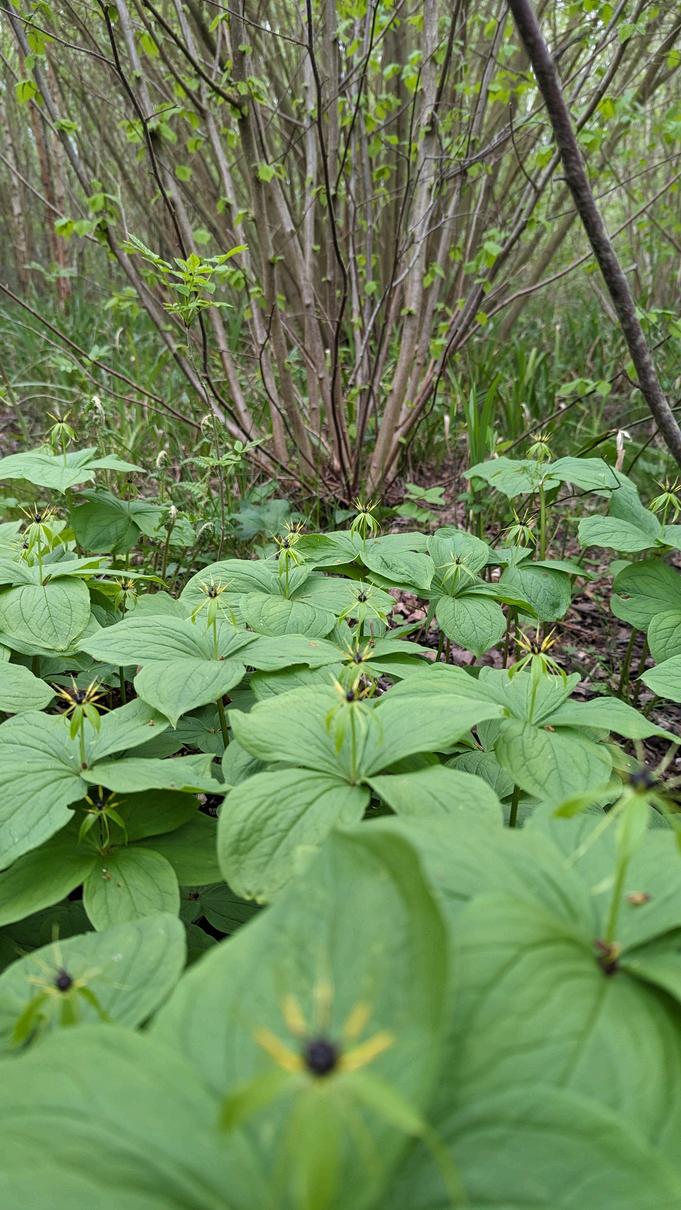 Joe Davis - Head of Nature Reserve Management
Joe Davis - Head of Nature Reserve Management
Hello all,
It has been a very wet and challenging winter and spring on our Nature Reserves Thanks to all of you who have endlessly trudged through mud, been soaked to the skin week after week and litter picked the same area of river flooding again and again! Your help and support are incredibly important to us and the work we do.
We have some great news to come about a new Nature Reserve in the pipeline! The Reserve appeal has been very successful too, and I am pleased to say that through this work we have some timely investment into our Reserves. We will be able up update machinery, improve hides, dig new ponds, improve our footpaths, and create new artificial nesting opportunities for our wildlife
More of this to come as we progress with the work.
I know that many of our volunteers not only contribute your time, but a lot of you give to our appeals too The Reserves Team are massively appreciative.
So now spring is upon us and our streams, ponds, lakes and rivers topped up! And alongside all that hard work we have achieved over the winter, we can hope for a great summer for our wildlife

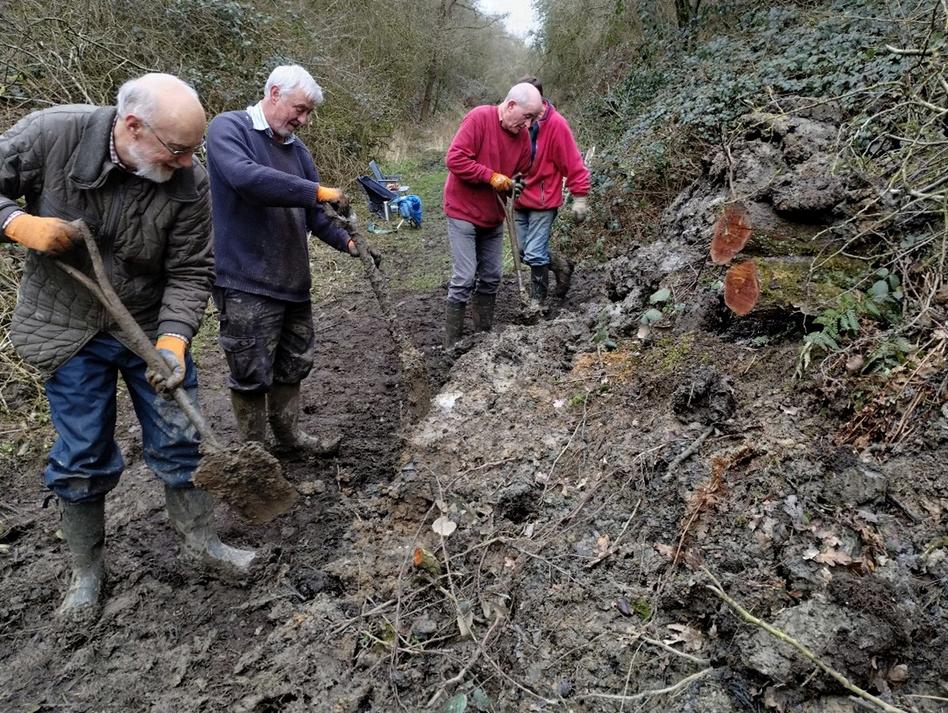


 Chris Hill - Reserves Officer
Chris Hill - Reserves Officer
Early March saw us clearing a land slip that had partially blocked Tilton’s railway cutting Following heavy rain (which we have not been a stranger to in recent months) the sides of the cutting become saturated and can slide downwards. If the current trend of wetter milder winters continues, I think we will be experiencing more of these events. But worry not, our intrepid team of volunteers cleared it in a couple of hours
I think it’s fair to say I wasn’t too popular on this day, very hard dirty work! I think I may have been buried in mudstone if I had forgotten the biscuits that day.

Again, following the recent floods across the country, several of our riparian nature reserves have witnessed some extensive damage to site infrastructure. In March our Tuesday volunteers set to work on re-erecting a stretch of fencing at Cossington Meadows. As the floodwater picked up debris, this built up and created a ‘wall’ against the stock fence mesh, overloading it to such a degree that it was pushed over Fortunately, we could salvage the posts and re-use them We also future proofed it by adding a few new posts.
Andrew Nielsen (volunteer, not our Andy) was determined to get his football back! Mary Rooks loves getting as close to water as she possibly can.

Litter picking has featured in a few of my previous reports but without our hard working volunteers, our nature reserves would not look as beautiful as they do, this photo was taken at a recent visit to Loughborough Big Meadow by the local landmark The Eleven Arches’. I like the way the volunteers all have their heads in the hedge trying to find every last piece of plastic.
I had to show you this piece of litter from a recent volunteer day at Wanlip Meadows nature reserve Some of our volunteers and staff will not recognise this design of packet. It just goes to show how long crisp packets persist in the environment.

I’m not sure what thoughts went around Phil’s head when he found this wheeled suitcase! Gruesome ones I imagine.
And Bob found a Great Diving Beetle!
Finally, a break from the usual litter picking to something a little more strenuous When the River Soar floods, the water races down the main track at Cossington Meadows. Inevitably, erosion occurs, and regular maintenance is required to patch up the holes that are created. More than what can be said for many of our roads





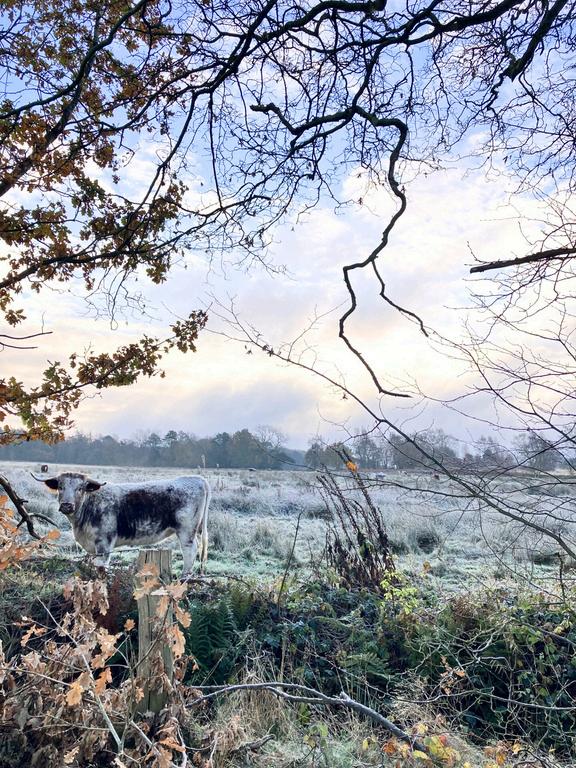 Elizabeth Jordan - Trainee Reserves Officer
Elizabeth Jordan - Trainee Reserves Officer
As some of you may know, my time with LRWT is coming to a close. I am so grateful to all the volunteers and members of staff that I’ve had the honour to work with. I’ve had a brilliant experience over the last 6 months, time has flown by! I have been offered a full-time position as a Countryside Warden for Horsham District Council in Sussex This is close to where I grew up and my family so it’s an exciting opportunity to continue to grow while being a bit closer to home.
While I have seen many of you out and about with the Western reserves team, some of you may not know what the day to day routine of a Trainee Reserves Officer looks like, so I would like to share a snippet of what I’ve been up to.
The main focus of the trainee position is to foster the skills needed to take on a permanent position such as reserves officer or warden, while assisting LRWT reserves team with their important work caring for the wildlife trusts nature reserves Three days a week are spent out and about, working with the volunteer groups with the practical reserves management. Two days are spent in the office or the workshop, where you will find me maintaining the tools, helping with record keeping, or whatever else the reserves team needs assistance with
This has given me the foundational knowledge of how the reserves are managed and working closely with Andy, Sophia and Chris has been invaluable as they have shared their expertise with me! It’s amazing how much you can learn and pick up in such a short space of time, especially as the seasons change and new species seem to be appearing every day. I’ll miss their company deeply.


When I began, way back in November, I was thrown in at the deep end as the winter work season was well underway. I spent some very chilly and soggy days clearing gorse and scrub from Charnwood Lodge and at Ulverscroft. There was plenty of work to be done at Cossington, with coppicing willow and replanting the whips to increase the scrubby diversity in Wood Meadow, as well as planting hedgerow species such as hawthorn and blackthorn. The winter rains then sent us a curveball as the extensive and relentless flooding left fields of litter in their wake. In the face of what felt like the entirety of Leicester's rubbish being dumped on the reserves, the comradery and positivity of the volunteers who rose to the occasion was brilliant
Thankfully spring has bought with it the familiar return of birdsong and warmer weather. It’s nice to not have to put on 3 pairs of socks in the morning! The work on the reserves has changed too, with the breeding season beginning habitat management work has ended, and reserves infrastructure maintenance has begun If I thought that I was going to get a break from the physical labour I was mistaken, as carrying strainer posts to inaccessible areas of the reserves has been keeping me fit.
Getting out and about every day and working with such knowledgeable colleagues means that I’ve managed to experience some brilliant nature while being here. Some highlights have been the lovely displays of snowdrops at Dimmingsdale, finding green hairstreak butterflies on the bilberry at Charnwood, participating in water vole surveying, and finding adders at Ketton Quarry A couple of weeks ago I took the opportunity to head over to watch the ospreys at Rutland Water which was a truly special experience.
Once again, a massive thank you to all the staff and volunteers who have made this experience so special for me I wish you all the best, and I’m sure I’ll be back soon!


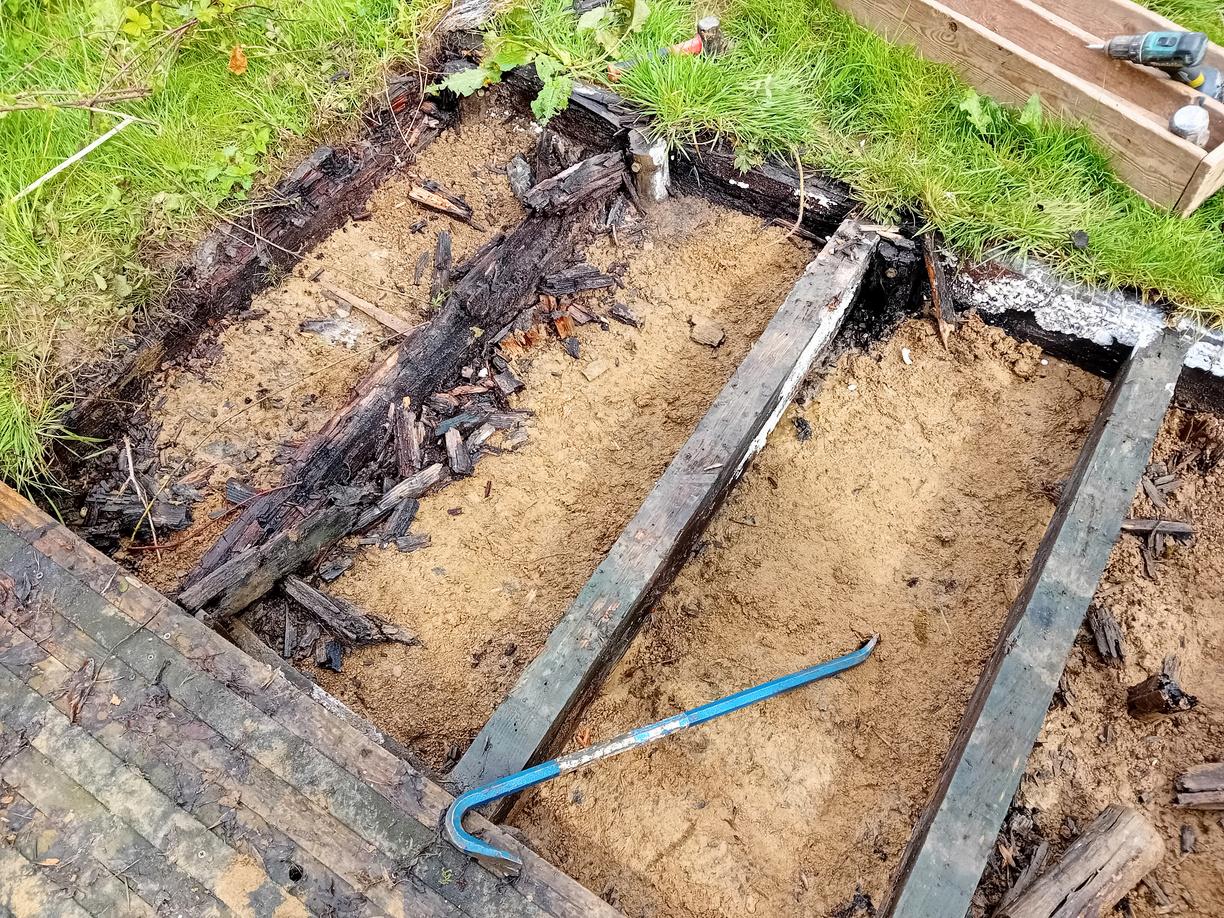 Matt Heaver - Reserve Officer
Matt Heaver - Reserve Officer
With the onset of Spring, at least I think it’s Spring, (considering I am still wearing about 5 layers and a woolly hat at the end of April!) our work attention has turned to infrastructure tasks at Rutland Water One area of concern were the dipping platforms around a pond outside of the Anglian Water Birdwatching Centre. Myself, Fran and Katie repaired one last year, so I thought I knew what I was letting myself in for. However, after pulling up the boards and discovering the splintered remains of the supports underneath, it soon became apparent it was going to be a larger job than expected for me and our volunteers Some of the supports even had mushrooms growing out the side of them! Needless to say, not the safest place to have children standing on near a pond.

The good news is we have a lot of spare timber in the yard for just such a job Me and the volunteers were able to find suitable lengths to use to replace the dipping platforms. Special thanks to Katie, AJ and Beth for taking the time to jet wash the nonslip strips which were so grimy, they probably aided actually slipping over than preventing it. In the end four dipping platforms were rebuilt One from scratch and we were able to re-use parts for the other three. While we were there, we rebuilt the tables to the side of the pond where the children can investigate their findings. Now they can do so on level tables that don’t look like they will fall over at the lightest touch!
The next big project is a new boardwalk at the newly improved Fran’s pond At the time of writing, a large amount of timber has arrived which I hope, with volunteer help, will eventually turn into a boardwalk! I look forward to sharing updates with you in the next issue of this newsletter so watch this space
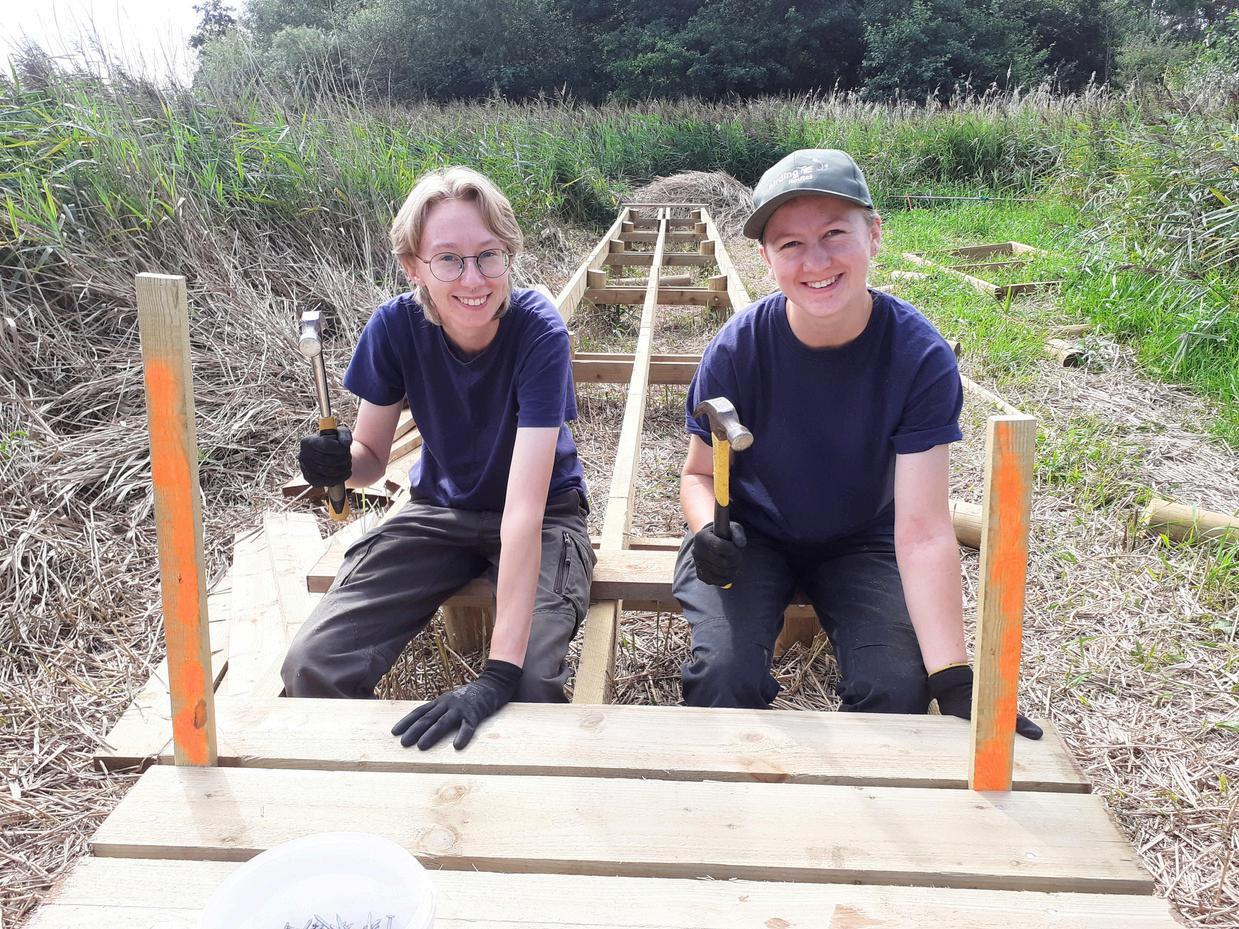

Trainee Reserve Officers at Rutland Water
We are looking for 2 new Trainee Reserve Officers to join us here at Rutland Water. Based at Rutland Water Nature Reserve’s purpose-built Volunteer Training Centre you will have the opportunity to get involved in all aspects of the nature reserve and habitat management with opportunities to get involved with wildlife recording and monitoring and community engagement.
This is a very practical volunteer placement role and will be suitable for someone who is looking to start a career in conservation as a nature reserve warden or in a similar role As part of your training you will gain certificates in the use of chainsaws, tree safety inspection and first aid; and you will be trained in hedge-laying, dry stone walling, brushcutter, tractor driving and much more.
The placement is based on four days per week for one year (Monday-Thursday), beginning on Monday 5th August 2024. We would expect you to commit yourself to this placement for the duration of the twelve months. Uniform and personal protective equipment will be provided.
A living allowance of £428 per month will be paid and temporary accommodation is available at our Volunteer Training Centre.
If you are interested in applying or know someone who is please visit: www.lrwt.org.uk/jobs for details
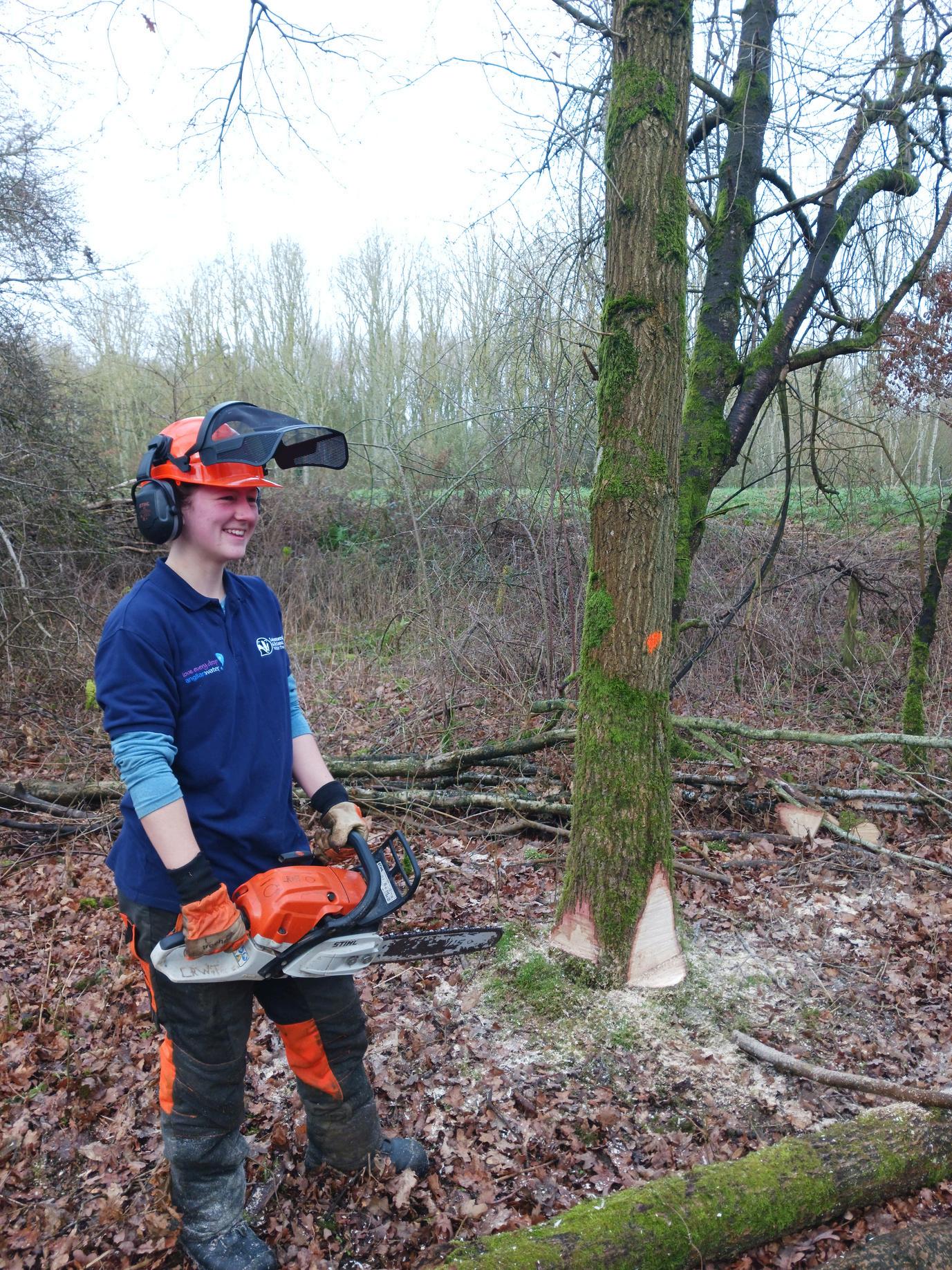

Isabel Raval - Charnwood Forest Regional Park Project and Surveys Officer
Charnwood Forest Landscape Partnership Scheme Project Update
With the arrival of spring and some miraculous dry weather, we have started getting out and about again in the Charnwood Forest Geopark in recent weeks for our Wildlife Recording Project. This kicked off in April with training sessions for the Ancient Woodland Inventory update at Burroughs Wood in Ratby, led by Andy Lear, and a morning discovering bryophytes with Uta Hamzaoui at Ulverscroft Nature Reserve To contribute to the AWI update and give an opportunity to those who have not been able to get out to survey independently, we are also carrying out a few small group woodland surveys within the Charnwood Forest project area.
For the past three years, our Wildlife Recording Project has allowed us to hold free training events on a wide variety of wildlife topics, generally aimed towards beginners. However, now we have just one year of the Landscape Partnership Scheme left, we will be adding to this by facilitating a volunteer group to regularly meet for recording sessions If you would like to get involved, please contact Isabel Raval at iraval@lrwt.org.uk. All wildlife records that we make will go onto NatureSpot, the identification help and recording website for V.C. 55 (vice-county of Leicestershire and Rutland). Records submitted on the website are verified by experts, go to county recorders, filter through to the Leicestershire & Rutland Environmental Records Centre and contribute to National Biodiversity Network data.

The end of April saw our Grasslands Project wind down to a close and we held a review event for volunteers at one of the sites involved in the project, Ulverscroft Manor The results from the project indicate that, overall, the condition of the grassland compartments responded positively to the changes in grazing or mowing management that were implemented. However, as the project was just three years long, it is difficult to come to definite conclusions, and so we hope to be able to continue monitoring these sites in the future to develop a better understanding of their restoration progress.


 Jo Taylor - Supporter Development Manager
Jo Taylor - Supporter Development Manager
Your Wildlife Trust office needs you!
Volunteers play an integral part in the success of Leicestershire and Rutland Wildlife Trust and we really value their support, commitment and enthusiasm.
Without volunteers we would not be able to manage our nature reserves, run our offices effectively or carry out our education work.
We are currently looking for new volunteers to join our membership and supporter team. From basic but essential tasks like making up membership packs or mailing letters to members, to adding data to our database, we rely upon our small team of administrative volunteers.
Volunteering is a great way to meet new people, to find out more about how the Trust is working to protect Leicestershire and Rutland’s wildlife - and to play your own part in our work. It also enables people to learn new skills, keep work skills current during a career break, gain work experience or simply stay in touch following retirement from full time work
Most office administrative opportunities are based in the Trust’s main office, Soar Lane in Leicester. We are looking for someone who can offer a few hours every week, ideally on a Thursday or Friday, but if you are only available occasionally, we would still like to hear from you as we also have an ‘ as required’ list No previous experience is necessary.
If you are interested in supporting the Trust's work, and want to join our small team of administrative volunteers, we want to hear from you Contact Josephine Taylor on 0116 2487354 or jtaylor@lrwt org uk for more information


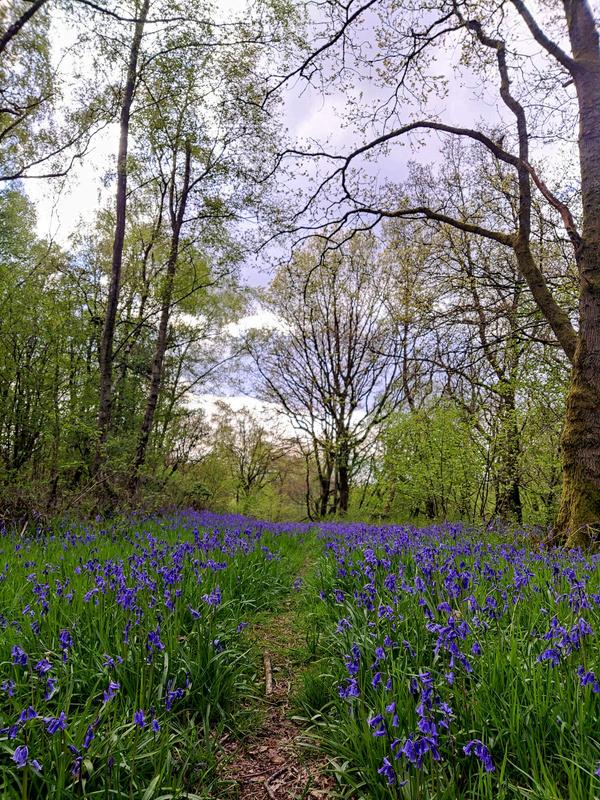
 Sarah Bedford - Senior Reserves Officer - East
Sarah Bedford - Senior Reserves Officer - East
The bluebell: by any other name does it smell as sweet? Well we have plenty to choose from: this little woodland flower has been given many names over the centuries including English harebell, wild hyacinth, cuckoo’s boots, granfer griggles, witches’ thimbles, lady’s nightcap, fairy flower, and cra’tae (crow’s toes). Almost half the world's bluebells are found in the UK – they’re relatively rare elsewhere - and as such they are the quintessential spring flower of the UK’s woodlands Inspiration for poets, authors and artists, they inspire nature lovers everywhere In the language of flowers, the bluebell is a symbol of humility, constancy, gratitude and everlasting love. It is said that if you turn a bluebell flower inside-out without tearing it, you will win the one you love, and if you wear a wreath of bluebells you will only be able to speak the truth On our reserves, there are numerous places to enjoy swathes of bluebells and other woodland flowers at this time of year: at Prior’s Coppice, Great Merrible Wood, Charley Woods, Charnwood Lodge, Ulverscroft, Hambleton Woods Launde Big Wood, Launde Park Wood
This species is a slow grower, taking at least five years for a seed to develop into a bulb Bluebells can take years to recover from the damage caused by trampling, and if their leaves are crushed they can be weakened (as they can no longer photosynthesise). The bluebell is protected under the Wildlife and Countryside Act (1981). This means digging up the plant or bulb in the countryside is prohibited and landowners are prohibited from removing bluebells from their land to sell. The species was also listed on Schedule 8 of the Act in 1998, which makes trading in wild bluebell bulbs and seeds an offence. This legislation was designed to protect bluebell from unscrupulous bulb collectors who supply garden centres

Our native species is not to be confused with the Spanish bluebell (Hyacinthoides hispanica), which is very similar in appearance. You can spot the difference however as Spanish bluebells grow upright, with the flowers all around the stem, not drooping to one side like the British bluebell Hybrid bluebell (Hyacinthoides x massartiana) is a mix of the British and Spanish bluebell. It is often very similar in appearance to our native bluebell and could threaten its existence by out-competing it and diluting the gene pool.
Many insects reap the benefits of bluebells which flower earlier than many other plants Woodland butterflies, bees and hoverflies all feed on their nectar. Bees can ‘steal’ the nectar from bluebells by biting a hole in the bottom of the flower, reaching the nectar without the need to pollinate the flower.
There are countless folklore tales surrounding bluebells, many of which involve dark fairy magic Bluebell woods are believed to be intricately woven with fairy enchantments, used by these mischievous beings to trap humans. It is also said that if you hear a bluebell ring, you will be visited by a bad fairy, and will die not long after If you are to pick a bluebell, many believe you will be led astray by fairies, wandering lost forevermore From a more pragmatic standpoint, bluebells have been used for a variety of different things throughout history, not just for ornamental purposes or fairytales. Their sticky sap was once used to bind the pages of books and glue the feathers onto arrows, and during the Elizabethan period, their bulbs were crushed to make starch for the ruffs of collars and sleeves. Due to their toxicity, there has been little use for bluebells in modern medicine. However, it is known that their bulbs have diuretic (increases urination) and styptic (helps to stop bleeding) properties, and research on how they could potentially help fight cancer, HIV and work as an insect repellent is ongoing.

However you enjoy your bluebells, I am sure you won’t be disappointed with their cheerful appearance in our woodlands this spring.



Cloud Wood
David Maltby and the volunteering team
It isn’t very often that the N W Group work party is asked to do a repeat performance of anythingapart from cutting down trees and saplings under the direction of our Reserves Officer Sophia. It is pretty certain that the successful completion of yet another year of coppicing at Cloud Wood has resulted in very satisfied customers for our stakes and binders As you can see below for example Michael Mann’s farm at Southam in Warwickshire now has some well laid hedges, with the help of our stakes and binders.
With the recent worldwide interest in carbon capture and large-scale tree planting schemes to help reduce the effects of climate change, the entire business of woodland use and management has once again come to the fore Since Adam first bit into something that would change his life for ever, man has been using woods and their products to help supply his needs. This began with a supply of firewood and something to erect a simple shelter By the time that Bill the Conqueror arrived “chez nous “ our existing forests have been significantly cleared apart from the places that were later developed for use as hunting forests. Medieval deer parks and pig foraging were a useful stimulus that kept the system going along with wood to supply housing, tools and ships for the navy and commerce By the late 19th century, this system had largely broken down with largely unmanaged woodland undergoing a considerable decline in the quality and opportunities available for its natural ecological richness. Cloud Wood mirrored this pattern, originally a working wood until the early 1900s it fell into decline. Now through harvesting stakes and binders as a by product of the management regime, it has once again become a working wood, a rare thing in 2024 of which LRWT can be justifiably proud.

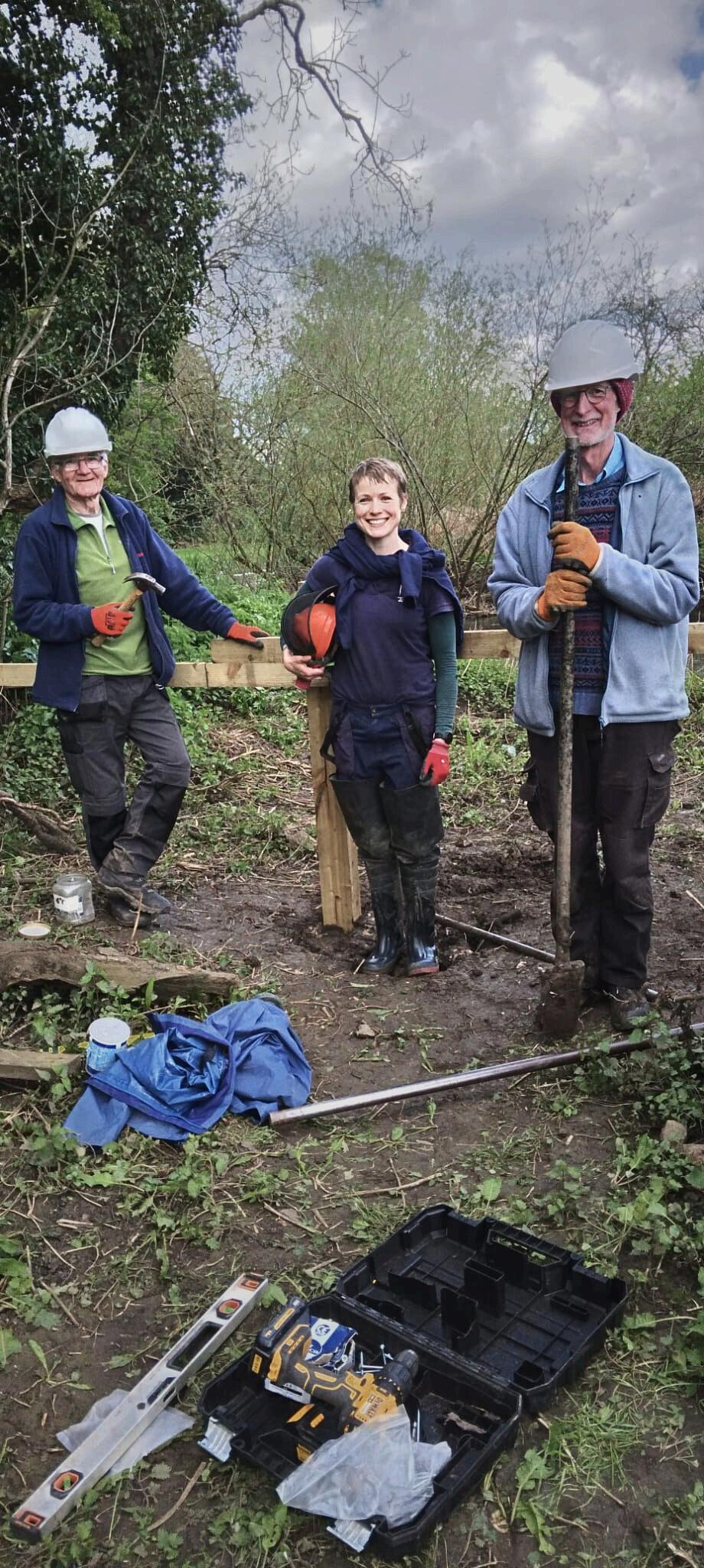
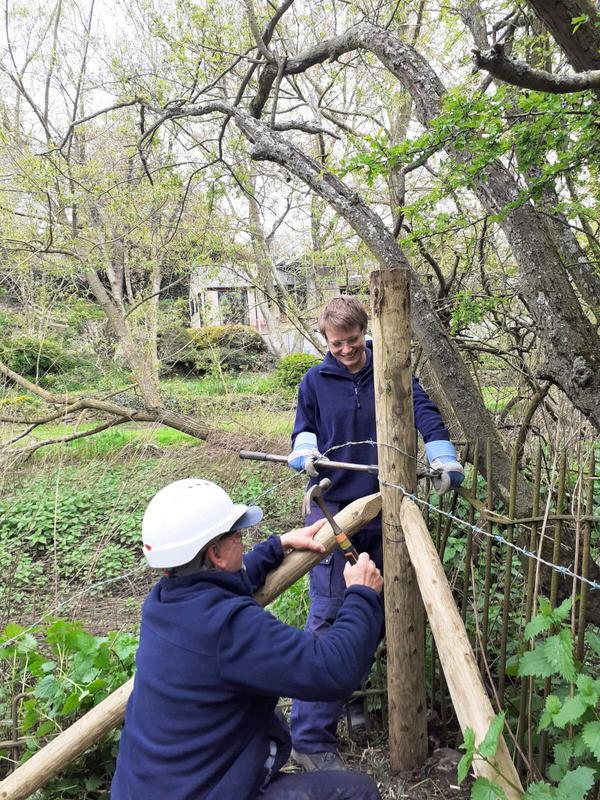 Sophia Attwood-Clarke - Reserves Officer
Sophia Attwood-Clarke - Reserves Officer
We’ve had another productive couple of months on the reserves in my care in the West. At Croft Pasture, we ’ ve acted on Natural England’s advice over the winter to remove gorse encroachment from the SSSI grassland The fire site spent most of this time under water, because of the inordinate amount of rain we have had, so the brash accumulated at the bottom of the cliff like a giant, spiky tumbleweed. When we returned to mend the fence in March, a whopping-great gorse burn up was had too. If ferrying heavy fencing materials back and forth across the reserve wasn’t enough, there was the conundrum of a series of unobliging strainers and a section of post and rail to dig into builders’ rubble, amid the usual succession of intermediates. It was a similar slog to get the fencing materials to the grazed meadows on the other side of the train track at Narborough Bog, but the Sunday team successfully secured the boundary ready for the return of the moos
And so, we enter the season of species control, with no other invasive as prevalent as Himalayan Balsam at Narborough Bog. I spotted the first seedlings by the path in March and braved a walk through the wet woodland to see what we would be up against this year The Northern end now supports a monoculture of it, so the plan of attack is to start here and cut accessible swathes below the first node and hand pull in between. I’m optimistic, because I know what you lot are capable of.
8 of us went rogue in the city centre and joined Fee Worton and Wildwater Ponds at the Belgrave Neighbourhood Cooperative Housing Association to help transform their garden into a wildlife haven. We constructed and installed features such as a pond, bug bench, woven dead hedge and planters recycled from pallets We planted ferns and flowers and prepared space for the tenants and volunteers to grow vegetables All the materials were donated by Wildwater Ponds’ suppliers and customers, and Harry and his team did the work for free. It’s incredible what can be achieved by a community, and it was a day to be relished Speaking of community – I’m so proud of ours Thank you, all of you

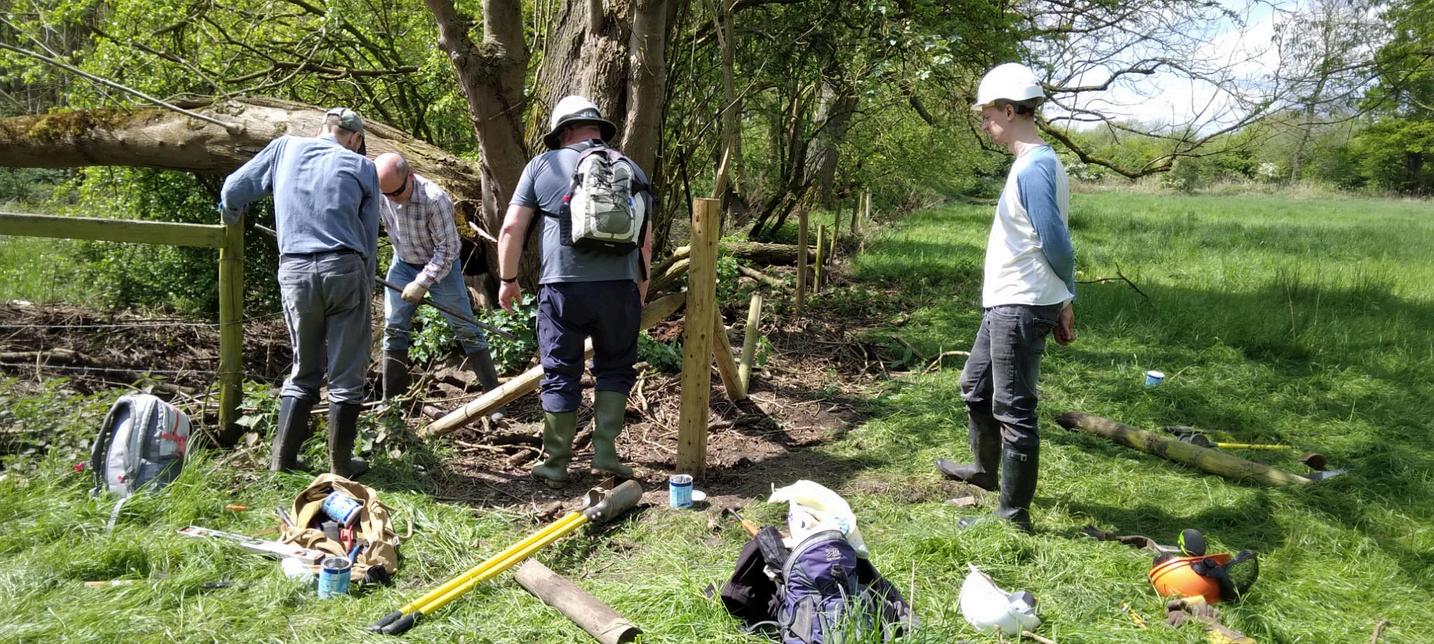

 More fence repairs at Narborough Bog
Building a pond at the BNCHA garden
The amazing team that helped transform the BNCHA garden into a wildlife haven
More fence repairs at Narborough Bog
Building a pond at the BNCHA garden
The amazing team that helped transform the BNCHA garden into a wildlife haven

 Matt Scase - Visitor Centre and Events Assistant
Matt Scase - Visitor Centre and Events Assistant
It feels like a lot has happened since the last Volunteer Newsletter and my update on the Osprey here at Lyndon. At the end of March we were rejoicing at the news we had just seen the first egg laid on the Manton Bay nest. Shortly after, 2 more eggs followed and we saw Maya and 33(11) incubating the 3 eggs they had on their nest At this point we were extremely hopeful for a successful year and we had news that in the wider Rutland area 29 Osprey had returned, with there being 11 nesting pairs, 10 of which were incubating eggs.
In April we welcomed Countryfile to the Nature Reserve and George Smith gave a wonderful overview of the introduction of Osprey, whilst standing on the shore outside the centre here at Lyndon.
Unfortunately it’s not all be good news for the Osprey One morning we were saddened to witness Maya carrying off one of the eggs from the nest, and we have to assume she knew the egg was unviable. Although it is not unheard of for Osprey to remove unviable eggs from the nest, the nature in which she carried it off in her feet was something we had not seen before.

After losing one of the eggs we watched with bated breath to see what would happen to the remaining 2 eggs. It was with great delight that on the 10th May we saw one of the eggs hatch and a little chick appear onto the nest. This is the 38th chick from our resident female Maya and marks her as one of the most successful breading Osprey on record The little chick seemed healthy and we waited to see what would happen with the remaining egg. As timed passed it became clear that this egg was not going to hatch and it would be just the one chick on the Manton Bay nest this year. Unlike the egg which Maya carried off the nest they appear content to leave this one be In all likelihood this will eventually get lost in the centre of the nest, or broken by one of the Osprey or a fish they bring back.
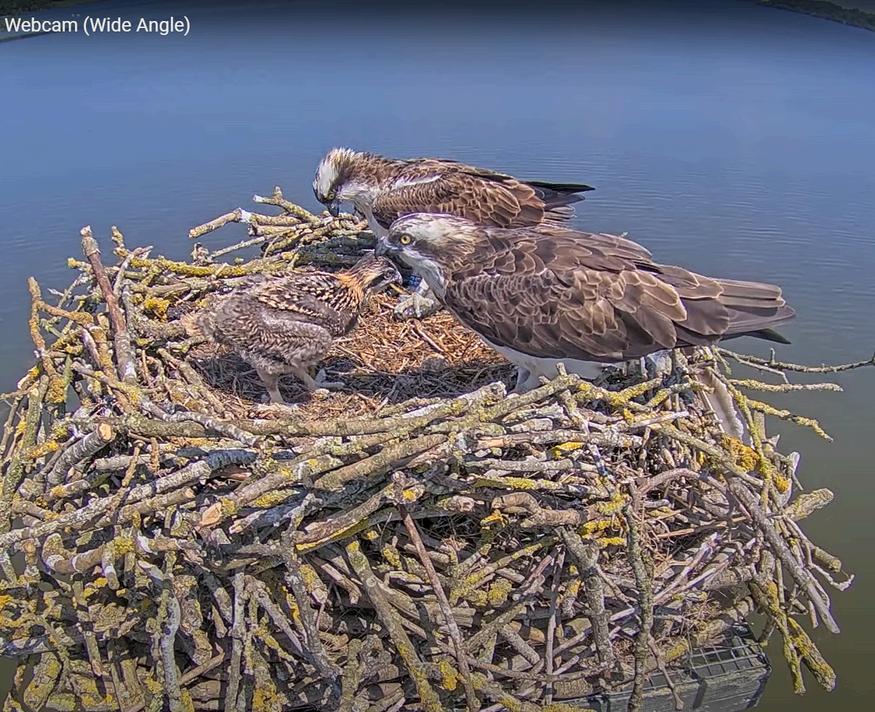

Our one successful chick didn’t have the easiest of starts to its life. One afternoon we witnessed an incident that left all of us with our hearts in our mouths. It all started when 33(11) brought back a ginormous fish to the nest The fish wasn’t quite dead and proceeded to flap around on the nest In doing this it managed to hit the chick and displace it right onto the edge of the nest. We watched as the poor chick was disorientated and stumbling around the edge of the nest, perilously close to falling off the side. Eventually the chick tried to make it back to the centre, but found itself trapped behind a large stick Due to the Osprey’s nature, the parents ignored the cries of the chick and left it stranded. Understanding the seriousness of the situation, the decision was made to go out to the nest and put the chick back into the safety of the middle. George Smith, Tim Sexton, and Beth Fox took the boat out and saved the chick Thankfully, shortly after we returned to the centre, we saw the chick was being fed by Maya and there was no noticeable harm caused to it from the impact.
The chick continues to grow and has really started to get quite large Being the only chick on the nest it is being fed extremely well and will hopefully have a successful summer before heading on migration in August.
We have also now started our evening Osprey cruises. An Osprey cruise is one of the most exciting ways to see the Osprey at Rutland Water. Setting sail from Whitwell Harbour on the Rutland Belle we head over to the Manton Bay nest and get opportunity to see the Osprey as they (hopefully) fly overhead and potentially even fish near the boat. To book onto one of our cruises, please visit the events page on the LRWT website.
